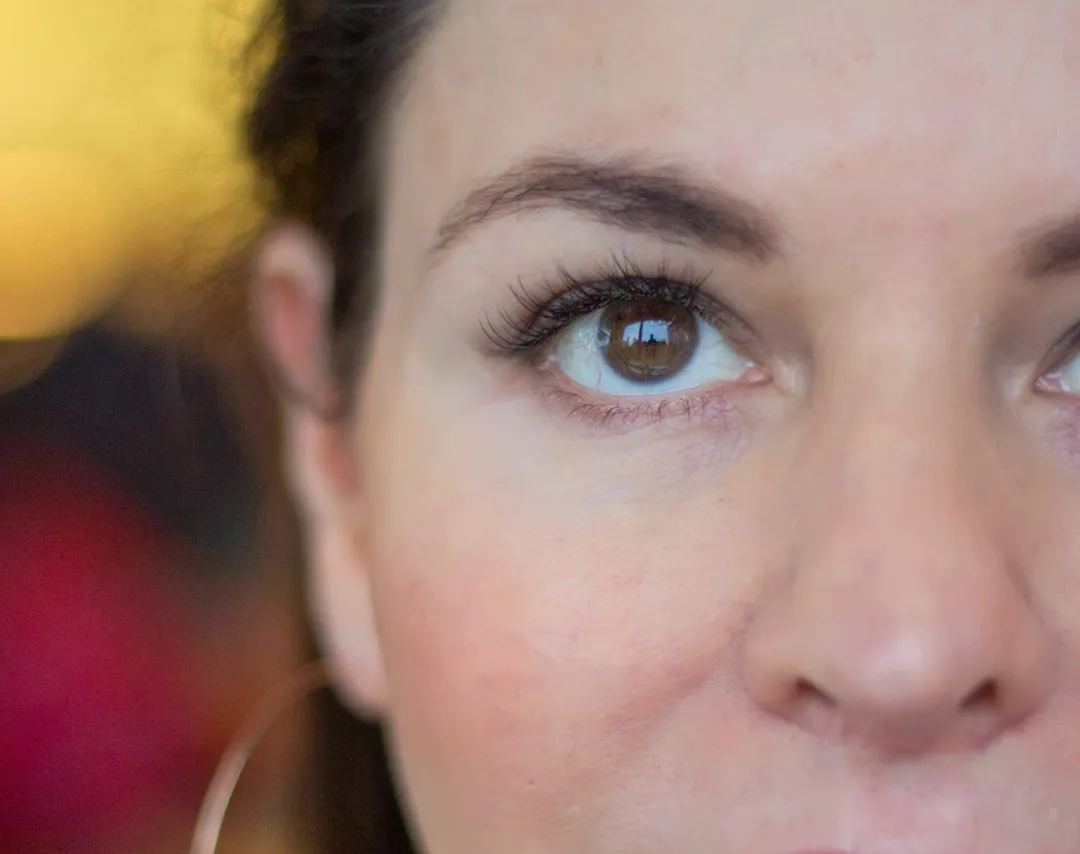Gender Dysphoria and Body Dysmorphia Explained

Hello, it’s me, Franches, author and owner of HolaSoyYo.com, a blog of thoughts and experiences with a trans feminine perspective.
Until recently I was fairly confused about the differences between gender dysphoria and dysmorphia. These two words are sometimes incorrectly used as synonyms. The fact is that they have very different meanings and affect people in divergent ways. Having said this, it’s not uncommon to find trans or gender diverse individuals being affected by both and also being confused by the terms.
Definitions of Dysphoria and Dysmorphia
To start the discussion let’s compare the basic dictionary definitions of the two words as employed in health care.
- Dysphoria is a noun employed in psychiatry to refer to a state of unease or generalized dissatisfaction with life. The opposite of euphoria.
- Dysphoric is the descriptive form of the word that has origins in the mid-19th century Greek term dusphoria, rooted in dusphoros or ‘hard to bear’.
- Dysmorphia is a medical term for an abnormality in the shape or size of a part of the body.
- Dysmorphic is rooted in the Greek word dusmorphia, which means ‘misshapenness, ugliness.’
One refers to discontent with life while the other relates to the form of body parts. Though these are very different words and definitions, it’s easy to confuse them in the context of a transgender experience.
It’s not uncommon for gender nonconforming or nonbinary people to feel unease with life because of their body parts, with a desire to be rid of traits related to their assigned gender at birth. So the words are very related, right? I can say, TGNB+ people who experience gender dysphoria will agree it’s not so simple. As a transgender individual myself, I see their differences.
Gender Dysphoria
The Diagnostic and Statistical Manual of Mental Disorders (DSM-5)(1) defines the criteria for gender dysphoria as feeling significant distress related to the incongruence between felt or expressed gender and the gender assigned at birth. Traditionally, professionals erroneously used terms such as “gender identity disorder,” although modern health professionals no longer see it this way.
On the other hand, the National Health Service in the UK (NHS) adds that people with gender dysphoria suffer with this sense of unease or dissatisfaction that may be so intense it can lead to anxiety depression and have a harmful impact on daily life.”(2)
The WHO‘s International Classification of Diseases (ICD) uses the more recent term “Gender Incongruence”. ICD-11(3) describes “Gender incongruence is characterised by a marked and persistent incongruence between an individual’s experienced gender and the assigned sex.”
Think of a person assigned male at birth (AMAB) that experiences distress for not identifying as such. Personally, learning that euphoria is the antonym of dysphoria was the fastest most comprehensive way I understood it.
Body Dysmorphic Disorder
Experts explain(4, 5, 6) Body Dysmorphic Disorder (BDD) or Body Dysmorphia as an obsessive-compulsive disorder causing substantial impairment and/or distress from a perceived defect in appearance. A person with Body Dysmorphia may see physical flaws that are often unnoticeable by others. They too may experience obsessive behaviors for more than 3 hours a day!
Furthermore, body dysmorphia can seriously affect someone’s psychosocial functioning – daily life, including work, social, and relationships. It’s not uncommon that people suffering from body dysmorphia also experience depression, anxiety, low self-esteem, etc.
Think of an athlete with the objective of building muscle. Still thinking they are flimsy after having a very muscular body. Then to solve their perceived lack of musculature, over-exercising and taking performance enhancers or exaggerated diet to build further muscle.
What Do Gender Dysphoria and Body Dysmorphia Mean in Real Life?
One major difference between gender dysphoria and dysmorphia is that gender dysphoria is not a disorder, illness, or disease(7) while Body Dysmorphic Disorder is. Still, in severe cases both gender dysphoria and body dysmorphia may be directly related to depression, anxiety and other mental health conditions.
Though I myself have never suffered from gender dysphoria nor body dysmorphia, I can absolutely relate to the definitions and references above. I regularly go through a similar thought process as people suffering from gender dysphoria and/or body dysmorphia but without the distress or impairment.
Let me present you with a couple of personal examples and extrapolate to as if I suffered from gender dysphoria and dysmorphia to highlight their differences. My examples will also show the similarities which are often the root of confusion.
An Example of Gender Dysphoria
I’ll use my Facial Feminization Surgery as a hypothetical example of gender dysphoria since it was my first surgical procedure. As a trans person assigned male at birth I wanted to change my gender presentation to female. Before FFS, some secondary sexual characteristics, like my nose, chin, and Adam’s apple were dead giveaways of my male upbringing.
These were in the way of achieving my objective of changing my gender presentation and ultimately to become cis-assumed. I felt a level of anxiety that being read as trans could lead to harassment under certain circumstances. So, by having FFS not only would I get closer to my goal, but it would also reduce the possibility of feeling angst in a potentially unsafe situation.
Now, after FFS and recognizing that I’m cis-assumed, that anxiety is simply not present anymore.
Let’s Assume Gender Dysphoria
Let’s assume for a moment that I experienced gender dysphoria in this FFS example. If I had grown up with dysphoria, maybe I would have dreaded seeing my face change during my teen years as it became more masculine. Possibly it may have affected my self-esteem if I had lived with that worry, even to the point of depression.
If this were the case, there’s a pretty good chance that hormone treatment and FFS would have alleviated any symptom of gender dysphoria. I say this because living with the results of the surgery have contributed to my goal of becoming cis-assumed.
An Example of Body Dysmorphia
Just as I did with my FFS above, I’ll give you the example of how I see one of my pet peeves. Then I’ll extrapolate as if I’d suffered from body dysmorphia.
I have a number of body parts that I don’t think look feminine and would want to change. As mentioned, the width of my neck bothers me every so often. I see a dude’s neck in the mirror. Sometimes I notice and look for angles that make it look narrower. I know there’s not much I can do about it.
Most everyone would disagree with my assessment. People don’t notice unless they’re really nitpicking for the minimal male traits left in me, so it’s not something I’m obsessing about for hours on end.
Let’s Assume Body Dysmorphia
Again, let’s assume I had body dysmorphia regarding my neck. If that were the case, I may stress thinking that everyone reads me all the time as male because of it. An example of obsessive-compulsive behavior could be thinking about how it looks for 8 hours a day..
Maybe I’d wear scarfs every day obsessing about hiding my wide neck. More extreme could be feeling depression to the point of choosing to stay home so people wouldn’t read me as male. Doing these would greatly impair my social interactions. All these negative thoughts while never recognizing that no one actually sees the male neck I see.
The Blurry Line Between Dysphoria and Dysmorphia
These two examples both start with physical issues. As I think more about them, I start to dislike them more and more. At some point it may turn into hate towards those issues.
In the hypothetical examples, as I ruminate further, the dysphoria and/or dysmorphia may start to take over my thoughts, causing distress and impair my ability to carry on with normal routines. It’s somewhat of a blurry line because the two examples are related to my body, my perception of it and my objective to change my gender presentation.
The Nitty-Gritty
Though the two examples above are related, they have major differences. In the case of my strong desire to have FFS it was based on the immutable aspect that I’m transgender. I was born with this internal drive to align my gender presentation to be perceived female. In a sense it could be said that the purpose of FFS was to ‘help me become myself’.
In my neck example showing obsessive behaviors, it’s not that I was born fixated on its girth. It would be my mind snowballing to the point of social anxiety based on something nobody sees. Opposite to becoming myself, rather, the goal would be getting to an unreachable ideal of having a narrower neck. Instead of helping me to become myself it would be to satisfy ‘society’s expectation that women have fine long necks’.
In the case of gender dysphoria, my perception matches the perception of others. Before gender affirming surgeries and therapies I perceived my body as a male body, that being the same perception of others. In the body dysmorphia hypothetical example of my neck, I’d perceive a much wider neck than what others actually see.
Similar Situations – Very Different Solutions
This is where the professionals need to get involved. My comments here are not meant to diagnose or treat anything or anyone. Rather I provide them for the purpose of providing context and as seeds for discussion. If anything of what I’ve explained above resonates with you, I consider obtaining extra help from mental health professionals.
Transitioning and gender affirming healthcare services (notice avoidance of saying “treatment for gender dysphoria”) are proven to reduce dysphoria(8)(9). In other words, helping a person with a strong preference to align their bodies to their own gender. The idea is to be in tune with their sense of being.
In the case of people with body dysmorphic disorder, the treatments are exactly the opposite to that of gender dysphoria. Cognitive-Behavioral Therapy (CBT) that is specific to body dysmorphia has shown to be effective (10)(11). CBT focuses on identifying, understanding, and changing thinking and behavior patterns.
In other words, helping the body dysmorphia patient to recognize that their perceived defect is not real or the reason for their obsessive compulsions. In complex cases, therapies may include antidepressants or other medications(12).
The Danger of an Incorrect Approach
In the past, it was common for gender dysphoria to be “treated” with Cognitive-Behavioral Therapy (CBT), just as in the case of body dysmorphia. This, like conversion therapy or reparative therapy, is the incorrect approach. In fact, CBT has been proven to cause more distress, trauma and an increase in suicide attempts in transgender adults(13).
In simple terms, this “erasure” approach tries to ‘convince’ a trans person that they’re not.
On the other hand, if surgical alternatives like those recommended for gender dysphoria were available for people with body dysmorphia, the patient most likely would be dissatisfied with their results(14). This is because surgery does not change the core mismatch between what a person with body dysmorphia sees and reality.
Imagine prescribing human growth hormones to an already very muscular body builder that is already over-exercising. Most likely they will still be dissatisfied with the results while risking their health unnecessarily.
Plastic and cosmetic surgeons are familiar with this situation. It’s not hard to find someone asking for ‘aggressive’ or unsafe procedures, or unrealistic results. After speaking with a prospective patient, experienced professionals may identify that they’re not good candidates for surgery due to body dysmorphia.
Does it make sense to operate on someone who would not be satisfied with their results regardless of how good the outcome really is?
If it makes you happy, do it. It’s too much risk, think otherwise. The problem is that gender dysphoria and body dysmorphia are similar and easy to confuse, so it’s best to seek help from a mental health professional. This is especially true when considering surgery that could cause irreversible changes.
A Personal Driving Force
I share a lot of experiences with people with gender dysphoria and body dysmorphia even if I don’t suffer from either. For example, I have spent considerable energy fixating on what I could change to make my presentation more feminine.
In other words, paying attention to the physical and behavioral details that others may perceive as male. The common elements I share with those that do suffer from gender dysphoria and/or body dysmorphia, have pushed me to make all sorts of changes.
At first I learnt to hide some of my male attributes, like the 5 o’clock beard shadow or my temporal recession. Later I decided to have FFS, a hair transplant, laser hair removal, etc., all to better align my gender presentation.
My gender incongruence propelled me to change my all around manners and posture, for example. It also gave me the drive to stick to voice coaching lessons for an extended period of time even as my progress was slow.
I managed to strike a balance between changing what I saw as male and avoiding falling prey to obsessive or distressing behavior.
Conclusion
Gender dysphoria and body dysmorphia can appear to be very similar but in fact they’re quite different. Whereas addressing gender dysphoria involves alignment with our gender identity, treatment for body dysmorphic disorder is to dissolve the obsessive behaviors of perceiving something that is unreal.
It’s not uncommon to find trans people that suffer from both gender dysphoria and body dysmorphia. This can lead to confusion as the therapies could be very different. Since these two can lead to more complex mental illnesses, like severe depression, it is important to seek help from a mental health professional.
After all, the objective we all have is to live a happy life, so it’s important to find the right approach to your specific and unique case.



